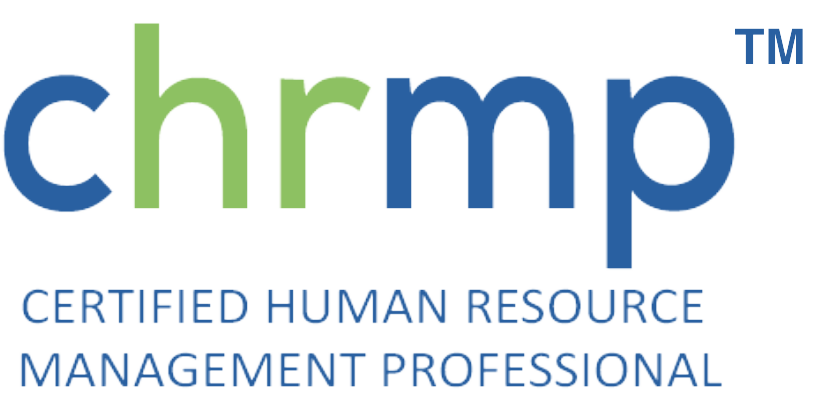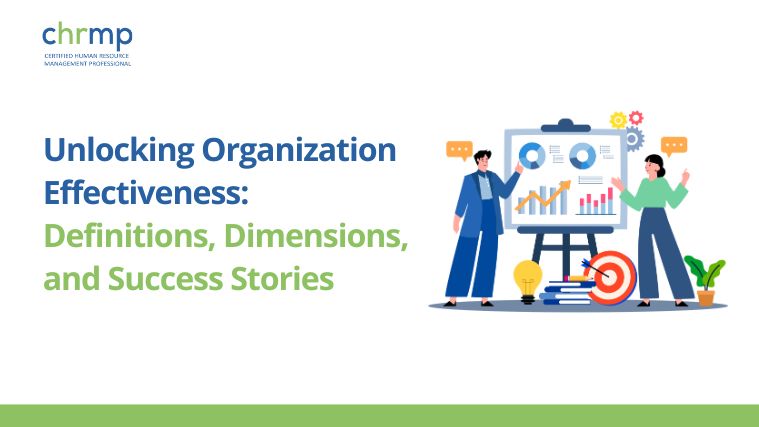Employee productivity is one of the most vital aspects in modern day world. Hence, it will be very pertinent to discuss employee productivity and its different aspects. The author has tried to put some of his thoughts on the topic, in this blog.
The success of an organization depends on many facets, employee productivity being the most important one. If productivity of an organization is higher, it strengthens the workplace culture. At the same time, it also boosts the morale of workforce , and creates an even better environment.
When this happens, people tend to make more efforts , to enhance the productivity further , along with maintenance of quality of products . The consequent prosperity of the organization and improved well being of its employees, are the other advantages, which we may associate with improved productivity.
1.0 Contents of the blog
- Definitions
- Productivity in human resource management
- Increasing & measuring employee productivity
- Conclusions
2.0 Definitions
2.1 Wikipedia
Wikipedia defines the employee productivity as follows:
Employee or workforce productivity is amount of goods & services, that a group of workers produce in a given amount of time. It is one of the several types of productivity that economists measure.
2.2 As per the reference, techtarget.com
Employee productivity is the assessment of efficiency of a worker or a group of workers. We may evaluate it in terms of output of an employee, in a specific period of time. Please note, one will always assess the productivity of a worker in comparison to an average , for an employee or group of employees, doing similar work.
2.3 As per Peter F Drucker
Peter F Drucker, the famous management consultant , defines the employee productivity as follows:
Employee productivity means a balance between all factors of production that will give the maximum output with the smallest effort.
2.4 As per European Council of productivity
- Productivity is an attitude of mind, it is a mentality of the constant improvement of that, which exists.
- It is the certainty of being able to do better than yesterday , and continuously.
- Constant adaptation of economic & social life to changing conditions , forms one aspect of productivity.
- Productivity symbolizes the continuous effort to apply new techniques & methods. In that way, it is the faith in human progress.
3.0 Productivity in human resource management
Productivity is the rate at which a worker, a company or a country produces some particular goods. The amount, which we produce, thus, will always be a matter of comparison with how much time, money & work, we may have needed to produce it, by other organizations, country or another worker.
3.1 Are productivity & performance related?
People tend to confuse between productivity & performance. They often use the two words interchangeably, but this is not the case.
As per Tanja (November 30, 2011), productivity is measure of efficiency of production. On the other hand, performance deals with the way in which someone functions to accomplish something successfully.
As per the reference, worktango.com, the following differences exist between productivity and performance.
- In business, we usually use the employee productivity to account for the amount of work completed, the quality of that work, and its worth in terms of organizational objectives. Companies are looking for the highest possible outcome ( productivity) for the minimum amount of input.
- Performance of the employees, on the other hand, also entails not only doing the work as per set norms, but it also includes communication, punctuality, willingness to collaborate ,and also their general attitude at work.
As per the reference , gulfnews.com, in their article “Never get confused between performance and productivity”, Tomy Weir presents the following differences.
- There is a vast difference between performance and productivity. Performance is the process of carrying out or accomplishing an action, task, or function. It’s your ability to accomplish the expectations of your company. Usually we measure how successfully you perform against pre-agreed criteria: KPI, goals, objectives, etc.
- We use productivity commonly ,but often define it poorly. The understanding of productivity lies in its root word, produce. Productivity concentrates on the output, i.e., what one produces. Whereas performance is often activity based, quantitative or qualitative
Similarly performance standards and productivity standards are different. The former is based on performance of employees & the latter is based on business volume.
3.2 Productivity and efficiency
Similarly, you should not confuse between productivity & efficiency.
As per the reference, setapp.com, productivity is quantity of work, which an individual, team or business produces. On the other hand, efficiency refers to resources, which we use to produce that work. Hence, if we require the greater time, effort and raw materials to do the same work, the less efficient the process is.
As per the reference, greatpeopleinside.com, in their article “ Productivity vs Efficiency: What Are The Differences?”, they present it in the following:
Productivity
At its very core, productivity shows you the rate, at which, we are developing a product or completing a task. When you are measuring productivity ,things get a little more complex than that. You have to take into account, whether it’s physical or office work, if the job requires a certain quality factor or the impact a specific industry’s requirements may have on its workers. Nonetheless, productivity is an integral part of any successful company.
Efficiency
Efficiency is all about the comparison between what we are really producing or performing , with what can be produced , taking into account the same amount of resources, such as: money, time and labor. In simpler terms, efficiency measures whether there is any waste in your company. Depending on the industry you work in, efficiency may be more desirable than productivity, but usually their importance is proportionate.
4.0 Increasing & measuring employee productivity
4.1 How to increase employee productivity
If you scan the literature, massive amount of material is available on the topic.
Sanjay Kumar et.al, in his article ‘Evaluation of factors important to enhance productivity’, published in ‘Journal or translational management’ (Volume 3 2016, Issue 1), lists 15 factors towards increasing the employee productivity.
However, top 3 factors, which contribute maximum in enhancing the productivity areas follows :
- Optimistic attitude & involvement of management
- Proactiveness of employees
- A good working condition
Further, lot of researchers have conducted many investigations . Based on these, they came to the conclusion that employee linked productivity plays a major role in enhancing the organizational productivity.
Also, the approach to increasing & measuring the productivity is continuously changing across industries, with passage of time. Technological advancements have forced some factors like labor & material to take a back seat in completing a task, in recent times.
In such rapidly occurring changes in industrial scenarios, the understanding about the key drivers , which boost productivity, and also methodology of measurement has considerably changed.
Knowledge sharing can Good employees will be loyal to the company and will always strive to do their best. They will not only provide excellent customer service but will also contribute towards the company’s success.
In order to attract and retain top talent, it is important to offer competitive salaries and benefits packages. In addition to this, a company should consider offering flexible working hours, paid time off, and other perks.
However, the human issues like employee engagement, motivation and developing an intrinsic sense of belongingness towards the organization , continue to play a dominant role in increasing the employee productivity.
Following tips may be useful in enhancing the employee productivity in your organization.
- We should make efforts to keep our employees happy.
- An appropriate incentive scheme must be in place.
- Reward scheme may help in keeping the motivation level higher.
- We must avoid overworking of employees
- Encourage the workers by telling that they are doing great job.
- Keep them motivated
- Communication should be proper & emphatic
- Let them not feel that they are stuck
- Behave humanly & develop compassion
4.2 Measuring productivity
4.2.1 General formula for productivity
The general formula for productivity is dividing total output by total input.
Suppose 10 employees , each of them working for 8hrs , produce goods worth Rs 400,000. In this case , employee productivity will be a number , which we get , after dividing RS 400000 by 80. It means a productivity of Rs 5000 per man hour. under a set of given conditions .
Employee performance management is An effective human resource management system ensures that the right person gets the right job. This is because it allows organizations to attract and develop talented individuals.
The following factors should be considered when implementing a human resource management system:
Recruitment
Hiring is one of the most critical processes in any organization. Recruiting the right candidates requires thorough research and analysis. Happy employees are more productive than unhappy ones. Also, it creates loyalty among the employees.
Training
It is very essential to train employees properly so as to enhance their knowledge and skills. Training also helps the employees to grow professionally and improve their overall performance.
Performance appraisal
Appraisal is a process through which an employer evaluates his/her employees’ performance. Accommodations for employees can be made based on their performance.
Motivation
A motivating factor is necessary for every individual to work efficiently. Motivating people increases the efficiency of the workforce.
Reward
Rewarding people motivates them to perform better. Rewards could be monetary or non-monetary. Monetary rewards include salary increment, bonus, and stock options. Non-monetary rewards include awards, commendation letters,
Hence, a company producing more (output), with a given set of inputs (capital , labor and materials) ,or using fewer inputs to produce the same output has an advantage over the company producing less.
4.2.2 A new insight on measuring productivity
As per the reference, hbr.org, the central mission of productivity index is to illuminate , how a business can get more units of output per labor hour, per machine or per pound of materials, or money spent per unit of product, in comparison to its competitors.
In the beginning of section 4.1, we had mentioned that rapid technological advancements have forced some factors like labor and material, to have taken back seat in completing the task .This is necessitating changes in the methodology of measuring productivity.
But unfortunately, the productivity per employee hours is still the prevalent practice around the globe.
However, in a modern plant like an assembly line, labor costs in form of labor wages, may be much less in comparison to other production costs like overhead costs, depreciation costs, inventory costs, indirect labor costs etc.
4.2.3 Consider all the factors which contribute to productivity rather than only direct labor costs
So, in order to improve and measure productivity, we should not give priority only to direct labor cost ,over other components of production costs. Rather, we should give priority to each segment of different production costs, in proportion to what is their share in overall costs.
For example: Suppose production cost components are like this: Labor Cost 10%, overhead Costs 30%, depreciation costs 9%, material costs 36% & indirect labor costs 15%. In this case , to calculate productivity per labor hour is a misnomer. Rather, we should also report it, with respect to overhead costs, material costs, indirect labor costs and depreciation costs.
The idea is that productivity may increase by reducing any of the above mentioned costs other than direct labor cost alone.
This insight may give a new direction to methodology of measuring employee productivity.
5.0 Conclusions
On the basis of abovementioned discussions , we may arrive at the following conclusions:
5.1 Employee productivity, performance and efficiency
- Employee productivity means a balance between all factors of production that will give the maximum output with the smallest effort.
- People tend to confuse between productivity & performance. They often use the two words interchangeably, but this is not the case.
- The productivity is account for the amount of work completed, the quality of that work, and its worth in terms of organizational objectives. Performance of the employees, on the other hand, also entails not only doing the work as per set norms, but it also includes communication, punctuality, willingness to collaborate ,and also their general attitude at work.
- Similarly, we should not confuse between productivity & efficiency. productivity is quantity of work, which an individual, team or business produces. On the other hand, efficiency refers to resources, which we use to produce that work. Hence, if we require the greater time, effort and raw materials to do the same work, the less efficient the process is.
5.2 How to increase employee productivity
- Top 3 factors, which contribute maximum productivity are: Positive attitude & involvement of top management, pro active employees and good working conditions.
- There is a need to differentiate between procrastinators and pro active employees for harnessing their full potential to enhance productivity .While pro active employees should be rewarded, procrastinators should be duly and tactfully dealt with, lest they should spoil the game.
5.3 A new insight into measuring productivity
- Rapid technological advancements have forced some factors like labor and material, to have taken back seat in completing the task .This is necessitating changes in the methodology of measuring productivity.
- So ,in order to improve and measure productivity, we should not give priority only to direct labor cost ,over other components of production costs. Rather, we should give priority to each segment of different production costs, in proportion to what is their share in overall costs.
Change management is defined as “the systematic planning, execution, monitoring and evaluation of change activities”. It is one of the most critical aspects of any organization. Change can be positive or negative .
A successful change management program is based on three main pillars – people, processes and technology.
People
The success of any change initiative depends on the ability of individuals to accept change. This acceptance needs to be supported by the right leadership and culture. Therefore, it is important to identify the key stakeholders who will be affected by the change, so that they can be included in the planning and implementation phases.
Leadership team is vital .It is important to have a strong leader who has clear vision, passion and energy to drive the change process. He/she must understand the importance of change and act as a catalyst for the entire organization.
Organizations with high levels of trust and respect among all members are more likely to succeed than those where there is distrust and suspicion.
Processes
There are several methods available to facilitate the implementation of a change. These include:
- Planning
- Implementation
- Monitoring/evaluation
Technology
Technology plays a vital role in driving change initiatives forward. To ensure that the change is implemented successfully, it is important to understand how technology can help support the change.
Employee Engagement can help increase the employee productivity rate . Employee experience has a positive impact when the team leaders focus on employee well-being. It is important to make sure that the mental health of the remote workers is looked after to increase their productive behavior . Productivity analysis helps on the individual level and and the organizational level and it benefits productivity growth . Qualified employees increase job performance . A good HRM system helps employers retain their existing talent while attracting new hires. When companies have a good HRM strategy, they usually have a high retention rate, which means less turnover costs for them. This article provides some tips on how to improve your company’s HRM system.
Personal Effectiveness plays a crucial role in increasing employee productivity. The best way to motivate your workforce is through training and development programs. Employees learn better, feel more confident and perform at higher levels with proper training and development. If you want to know how much money you could save by investing in your staff, then take a look at our guide here.
Employee Development is an integral part of business growth and success. HRM includes all functions related to human resources including recruitment, selection, compensation, benefits, training, performance management, etc. HRM also involves creating an environment where people can grow professionally and personally.
It is essential to create a work environment that motivates employees to achieve goals and produce results.
Human resource management is the process of managing the human capital within an organization. Human resource management encompasses a wide range of activities such as recruiting, hiring, developing, motivating, compensating, terminating, and retaining employees.
It is very important for an employer to pay attention to the quality of its employees.
Frequently asked questions :
A: There are many aspects of employee productivity. Some of these are listed below:
- Job satisfaction
- Communication skills
- Training and development
- Workload
- Health & safety
- Time management
- Motivation
- Stress management
- Conflict resolution
- Teamwork
- Leadership
- Creativity
What factors increase productivity?
A: Here are some key factors that increase productivity:
- Job Satisfaction
- Communication Skills
- Training and Development
- Workload Management
- Health & Safety
- Time Management
- Motivation & Performance Management
- Stress Management
- Conflict Resolution
- Teamwork & Collaboration
- Leadership
What are the three biggest influences on employee performance?
A: There is no single factor that can be said to influence employee performance. However, there are certain things that play a major role in improving employee performance. These include:
- Job satisfactions
- Communication skills
- Training and developmental opportunities
- Workload management
- Health & safe practices
- Time management
- Motivation
How to measure productivity in the workplace?
A: Measuring productivity is not easy. Many organizations use various methods to assess employee productivity. Some of the most common measures used are:
- Number of products produced per unit time
- Number of units produced per hour worked
- Number of hours worked per week
- Number of weeks worked per year
- Number of sales made per month
Ripples Learning is continuously striving to add value to knowledge pertaining to the human resource field, through its blogs and different state of the art programs. For knowing more about us please go through the following websites:






